Darwin Birds
(Our guide for this day was Mike Jarvis - Experience the Wild.)Rainbow Bee-eater. Brightly colored and looking like a Kingfisher somewhat, these birds feed on insects more like swallows, except they catch and eat the stinging kinds and dragonflies. What is even more unusual is that they nest in burrows in the ground.


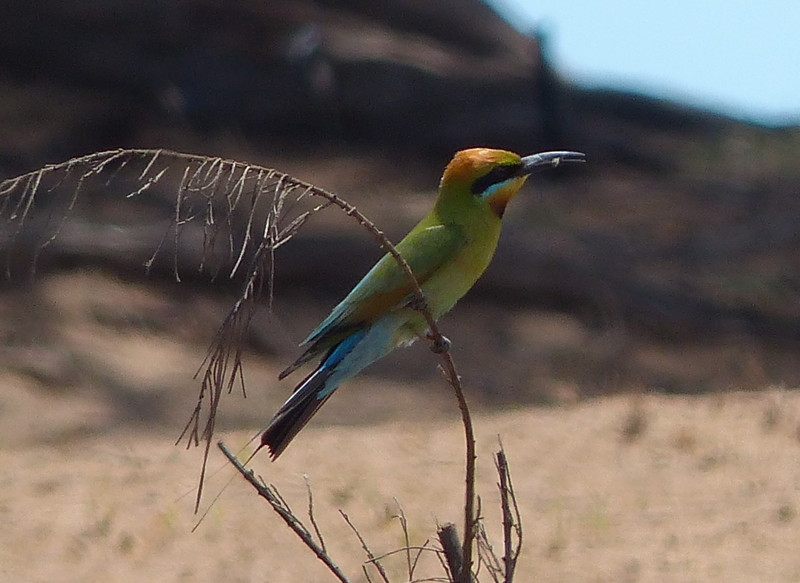
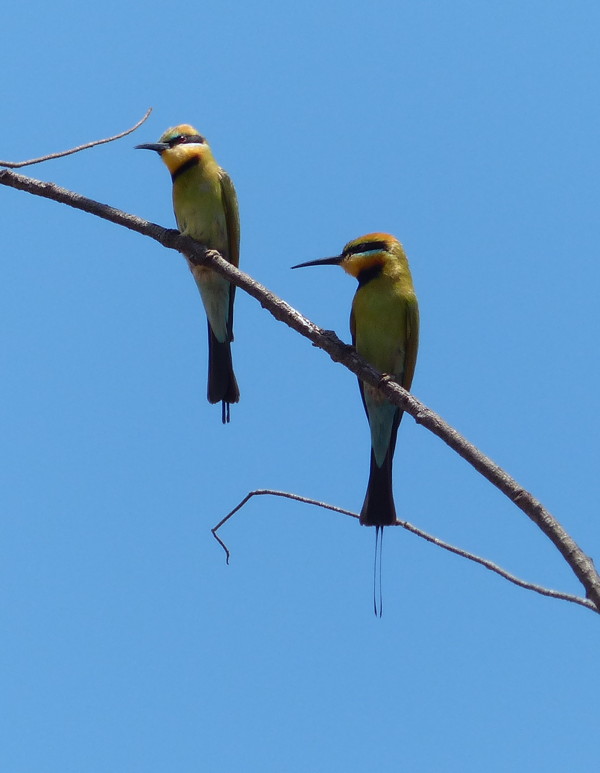
Rose-crowned Fruit-Dove. This bird is actually a pigeon, but they are fruit eaters. I think we were lucky to get a photo since they are usually high up in the trees.
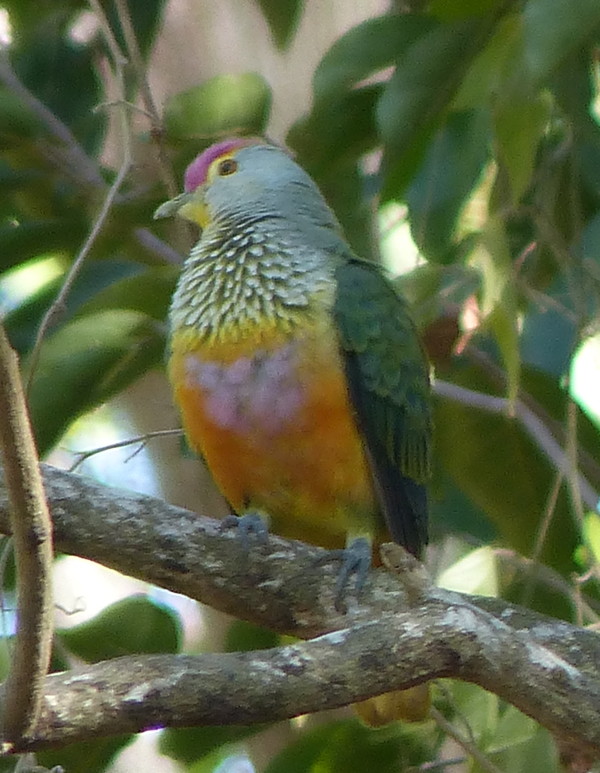

Masked Lapwing. Actually a Plover, these birds get their name from their facial wattles. Their nests are on the ground, fashioned with twigs, stones, and animal droppings. We saw dozens of them close to our room at Wildman Wilderness Lodge, foraging on the ground.
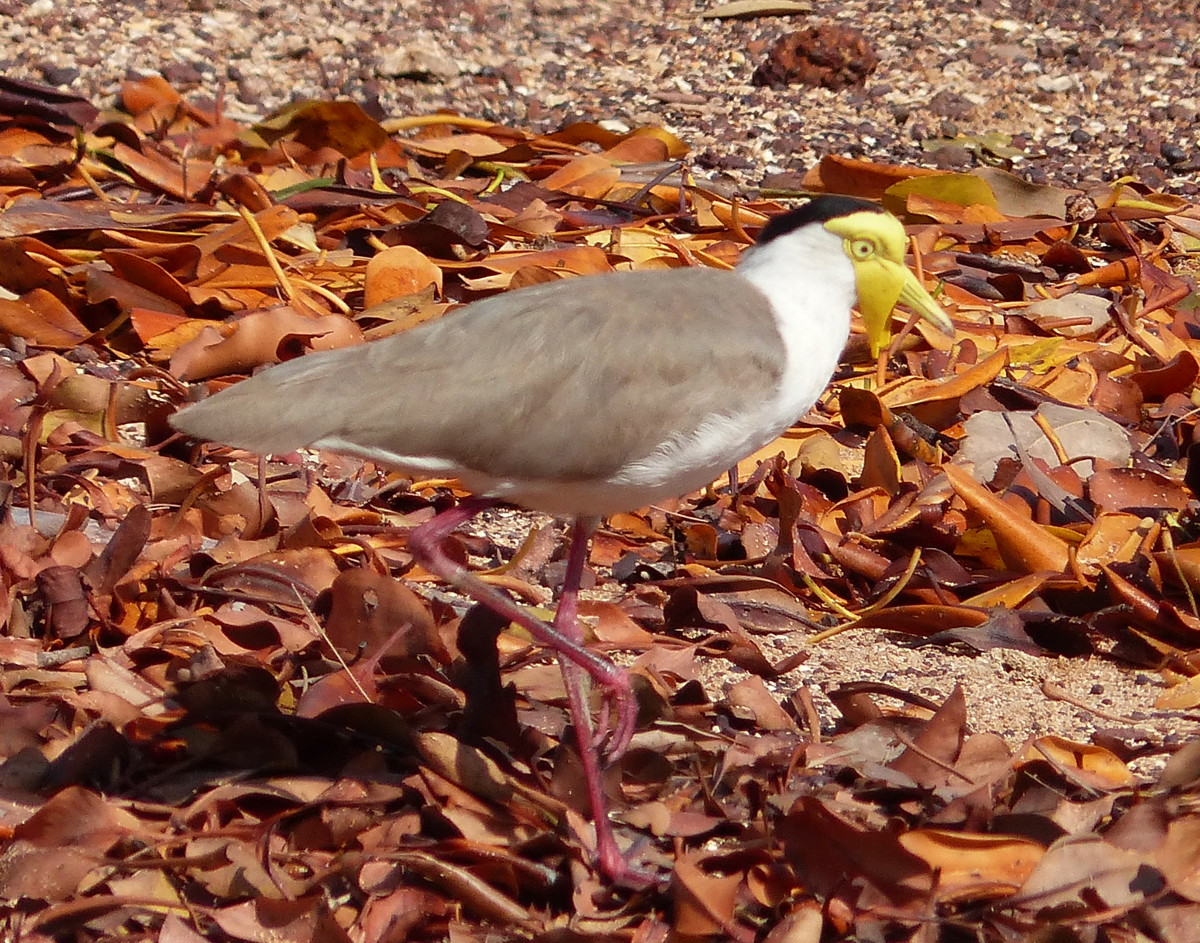

Rainbow Lorikeet. Obviously a parrot, they feed on blossoms. We wondered what they feed on at other times of the year. They nest in hollows in trees.


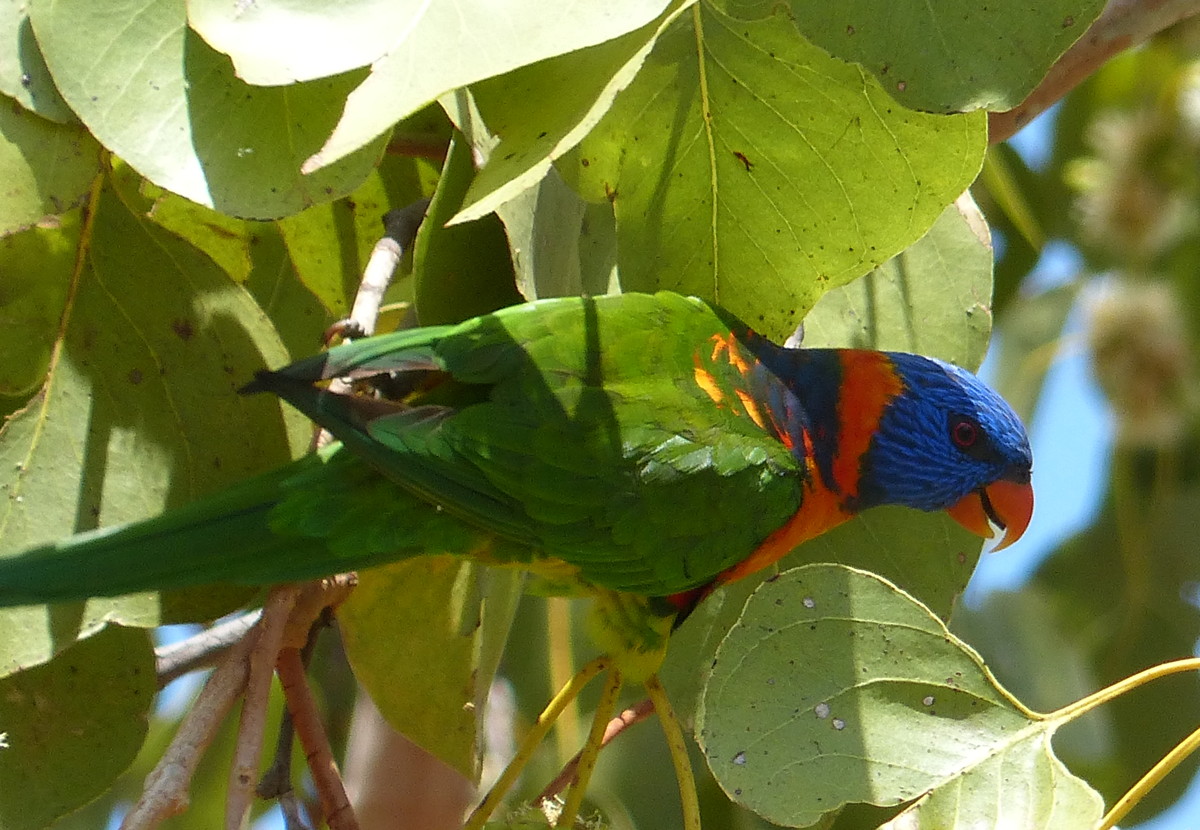
Australasian Figbird. A category of Oriole, they feed in fruit trees, as their name suggests.
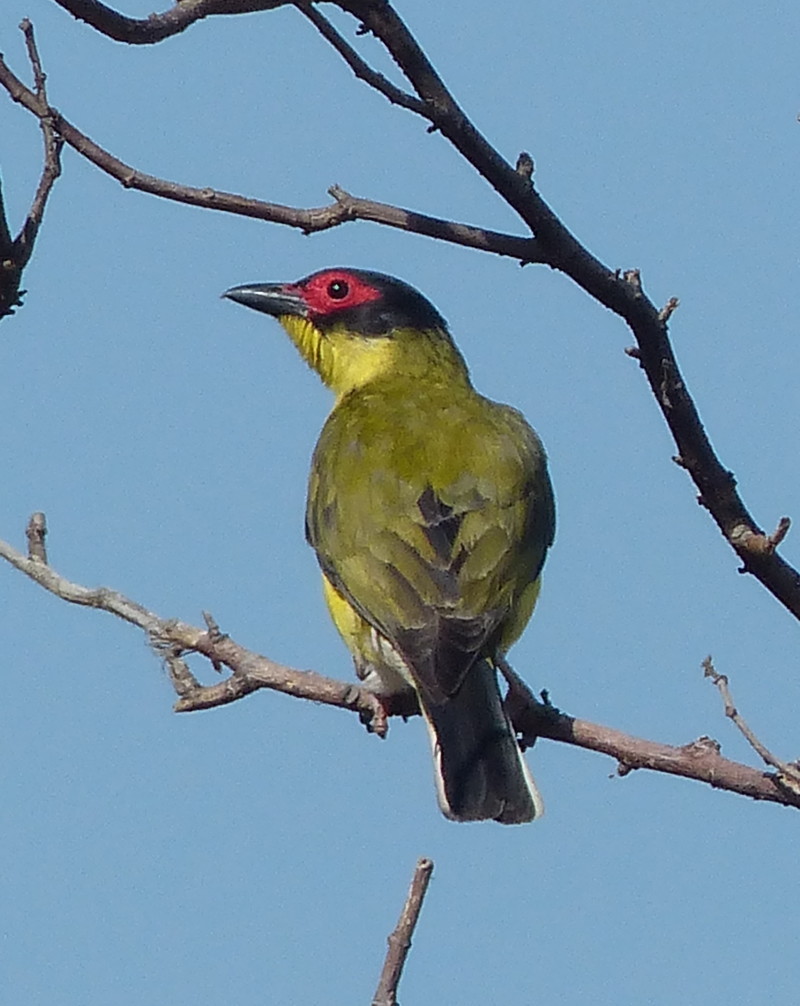


Bar-shouldered Dove. Brightly colored, these birds are ground feeders, but they do apparently nest in trees.
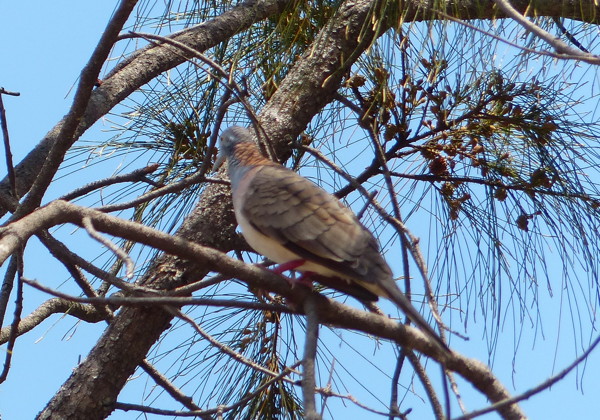


Magpie Goose. Our guide Mike told us that these geese often pair up with two females and one male, as apparently these three have. The unusual shaped head is striking. They prepare floating nests in the water.
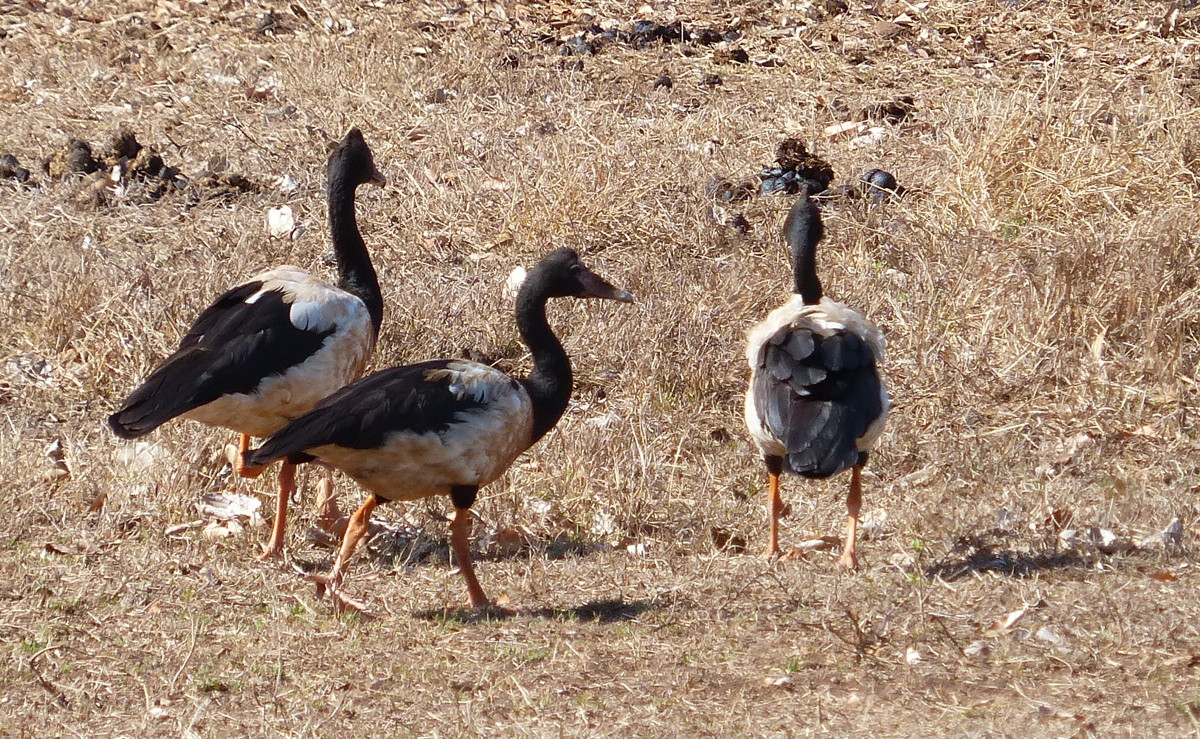

Black Kite. These birds were quite prominent along the water in Darwin, easily identified by their forked tail. They are meat eaters, and make large nests in trees which are reused.


Little Friarbird. These are actually honeyeaters.
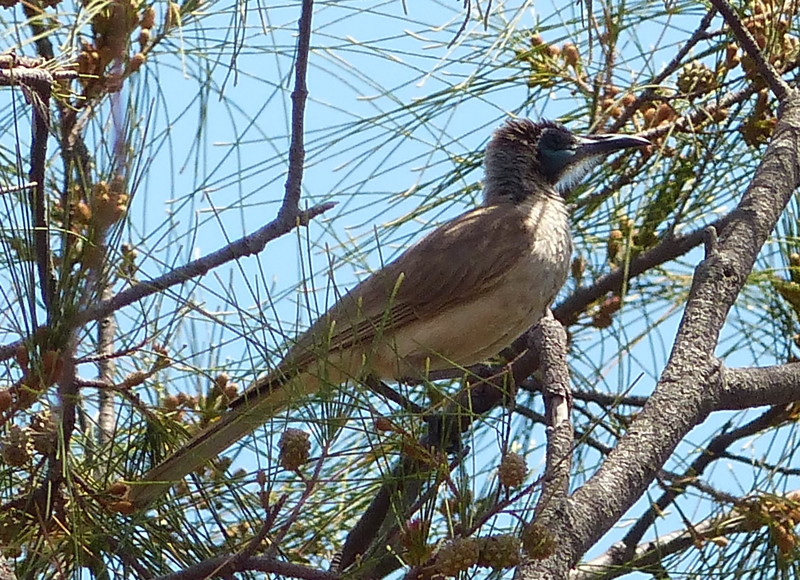

Brown Honeyeater.
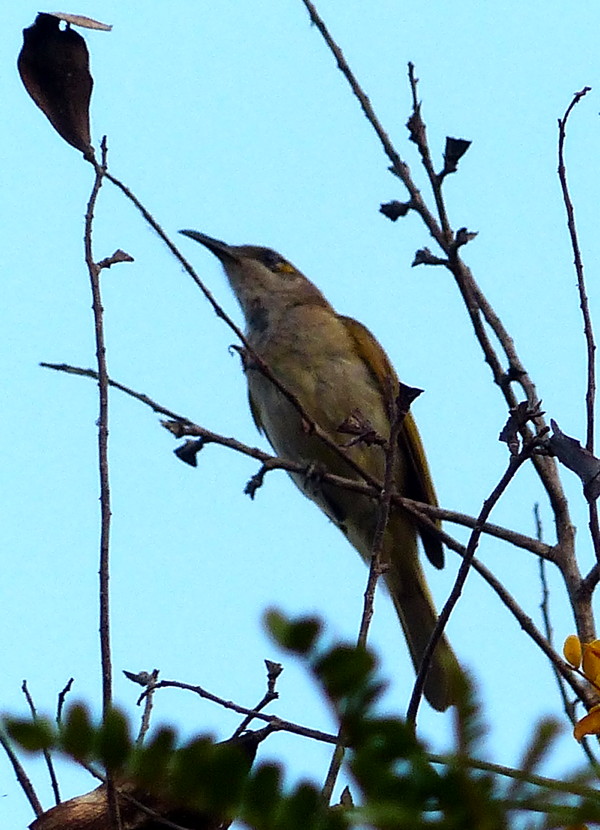

Forest Kingfisher. As one would guess from their name, these Kingfishers don't feed on fish, but instead on lizards, grass hoppers and other large insects found in the forests.
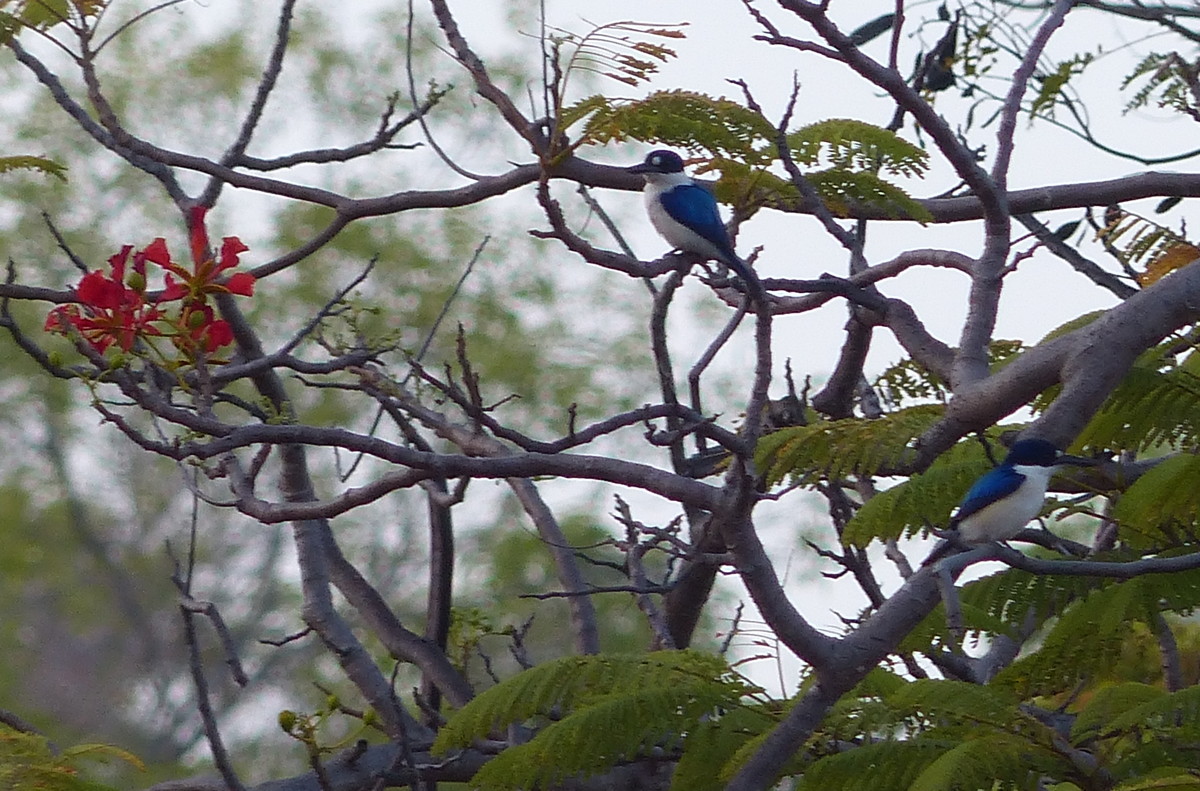

Crested Tern. We originally thought this was a Gull-billed Tern. But, the yellow bill marks it as Crested. In breeding plume the black covers the entire top of the head and forms crests.


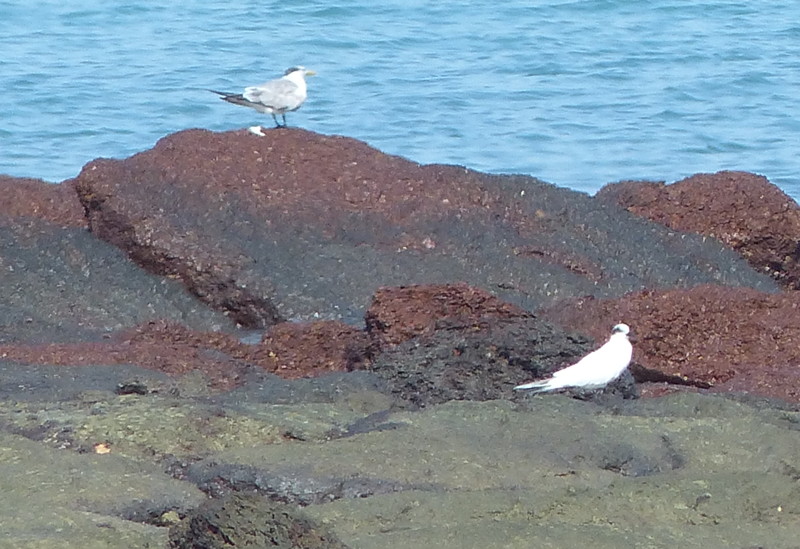
Jackywinter Flycatcher.
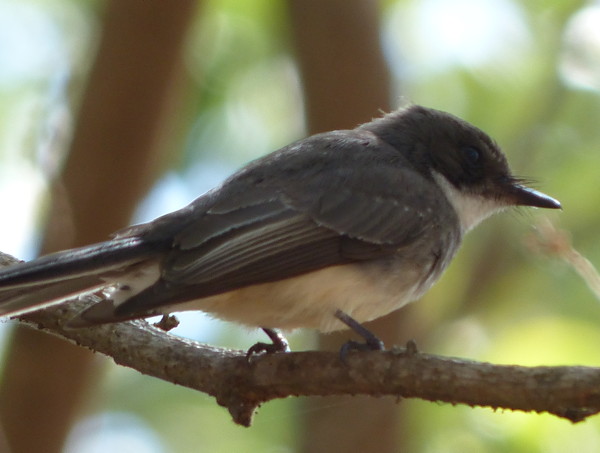

Lemon-bellied Flycatcher.


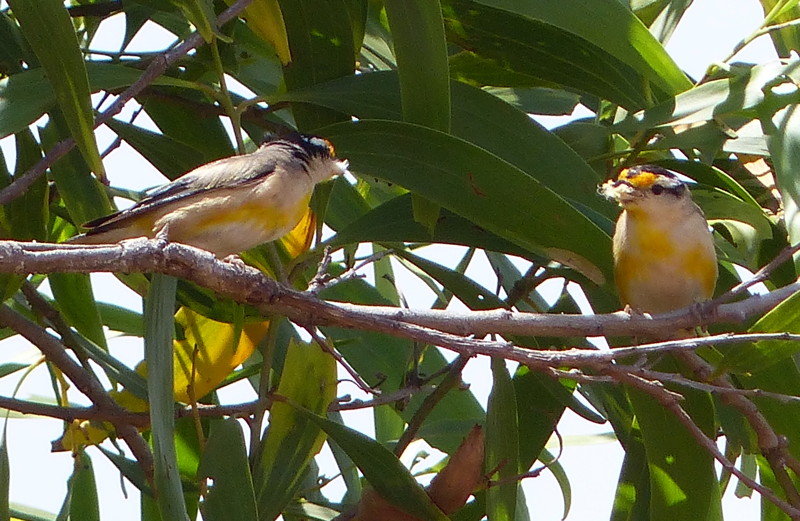
Magpie-lark.


Northern Fantail.
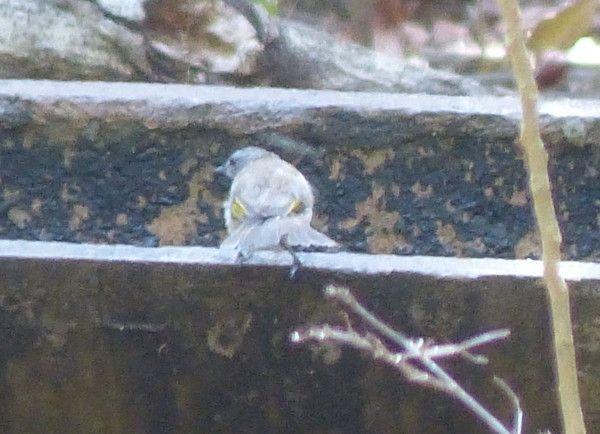

Orange-footed Scrubfowl. With their large feet, these birds rake leaves, twigs and what ever else might be on the floor of the forest into large mounds, which become their nests. Mike explained that they lay a single egg and then tend the pile to provide the right heat for incubation. Once the chick hatches, he makes his way to the surface and flies away, often far away, un-assisted by his parents. Once he lands he is likely to remain in the same area the rest of his life. We found this quite amazing and wonder how they find their mates when they never see their parents.


Scrubfowl Mound. This was a mound we saw on our walk which was about two feet high and an 15 feet or more in diameter. Mike told us he had seen even larger ones.
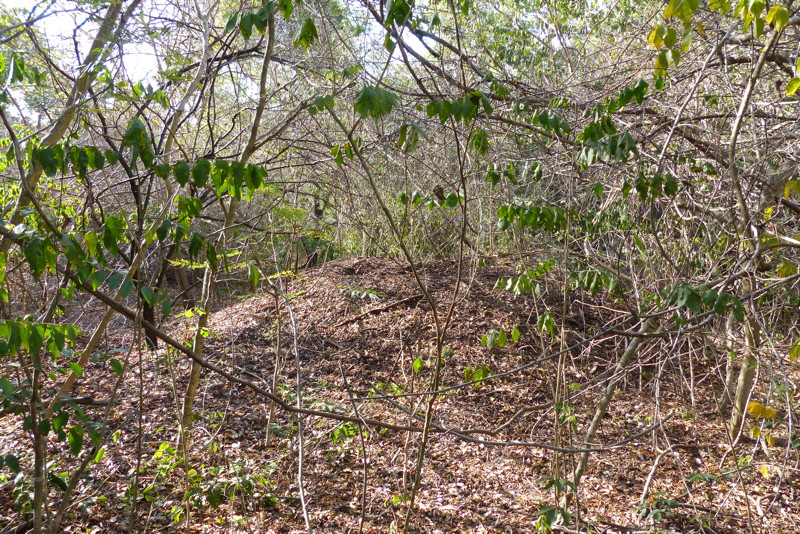

Eastern Reef Egret. These may be either white or charcoal grey as this one is. They are stockier than other egrets.
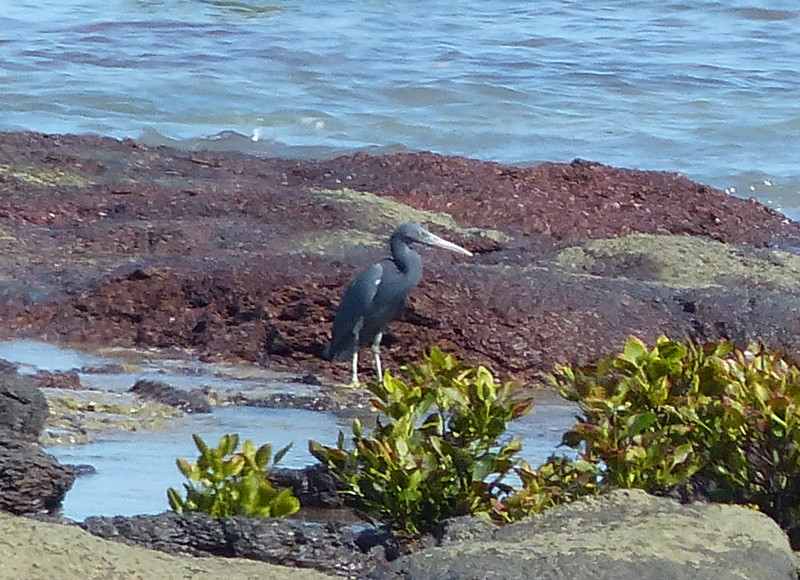


Sacred Kingfisher. These are forest kingfishers, which feed on lizards and grasshoppers on land.
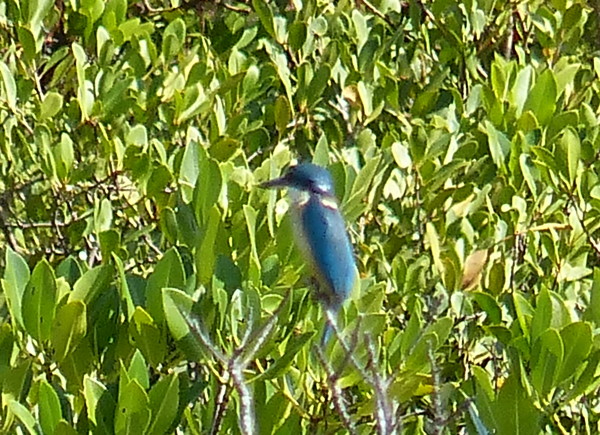

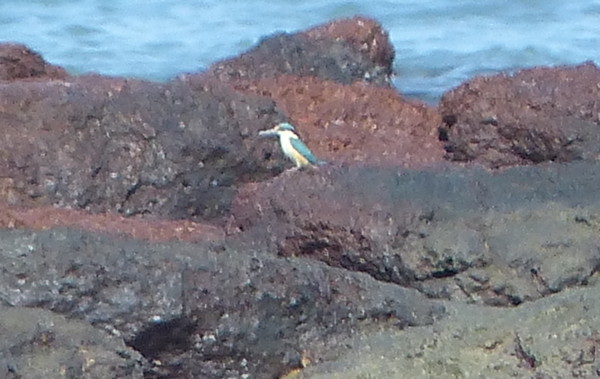
White-throated Honeyeater.


Yellow Oriole. Nests for these birds are cups hung from branches.
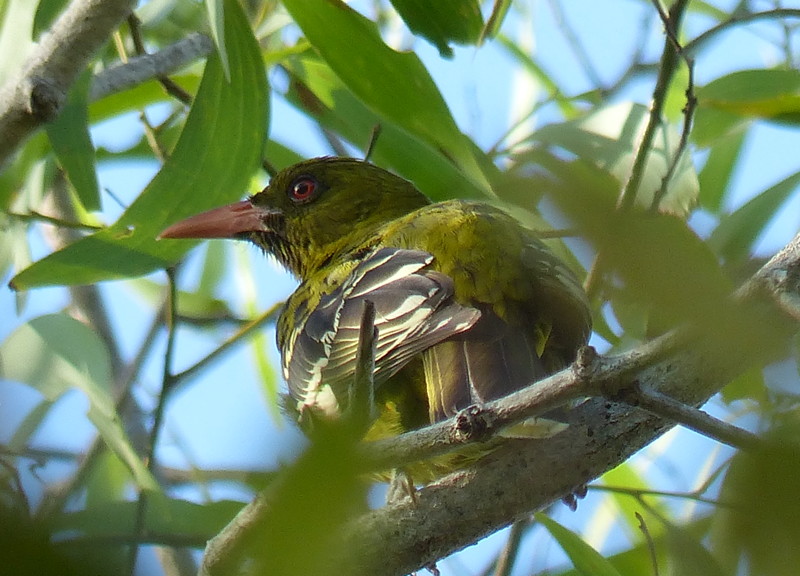

Blue-faced Honeyeater. (with green face)
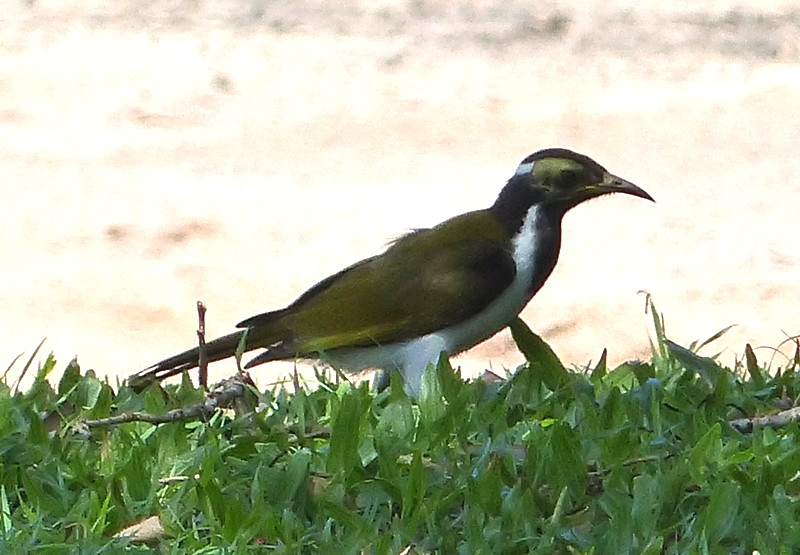

Same bird feeding chick.
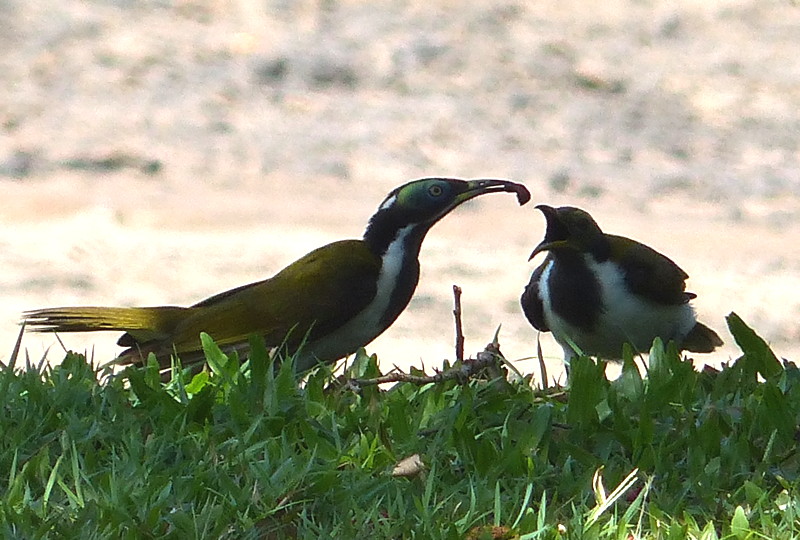

Return to log Next to Wildman